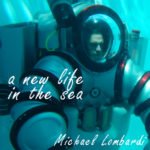
They say “one man’s trash is another man’s treasure”, and that may well be the case for pickers galore, or even for we subaquatic pickers – wreck hunters, salvors, and history nerds.
But it’s not all fun and games…
In some cases, underwater wreckage is actually a watery grave, and must be treated with the utmost respect. In others, it’s a mass of plundered goods. And in still others – it is truly, utterly, and sadly trash.
We’ve been pleased to do our limited part in shedding some light on underwater pollution over the past couple of years. In fact, perhaps much as it has been intended, the film ‘A Plastic Ocean’ got us out there on the streets along with our colleagues at EcoRI News to organize a local screening here in Providence, Rhode Island, and thereafter start to build on this theme through some interesting journalism.
Now, what we see is easy – it’s easy to capture, but it’s equally easy to become numb to its presence, and just plain ignore that pollution is everywhere – it is a fact of life in our [sub]urban environment. What we don’t see is a massively understated problem, and remains largely out of mind.
Here, I’ll present three local underwater or waterfront pollution stories to consider as you are out there staring off at our beautiful 400 miles of coast
- The Crane Barge
This big hunk of junk sunk over a year ago here in Providence, and is still littered with power equipment that may or may not have fuel.
2. The Ferry
Very close to the crane barge is this ferry, which has been resting on the bottom of Narragansett Bay for over a decade. It appears to be stripped of anything overly hazardous, and what’s interesting is that despite it being dubbed an environmental and navigational hazard, it is actually providing substrate for an oyster reef, illustrating the fine line we walk with hazards and human health.
3. Microplastics, in corals?
Yep – microplastics. You can’t see them, but they’re there, in both staggering concentrations, and found within the smallest of organisms. One should note – if they exist at the low end of the food chain, then they most certainly exist much higher up in the food chain.
So, there you have it – our precious Ocean State littered with gas and oil, toxic oysters, and microplastics…all out of sight, and all out of mind…and it’s a scenic journey that I would love nothing more than to reveal to everyone firsthand.
In close, the world has a way of healing itself, and that has been a proven cycle of life on Earth – just remember that we’re not immune, and the golden rule applies to our planet just as much as it does to one another. If we continue to ignorantly destroy it, it will in turn not hesitate to destroy us.

